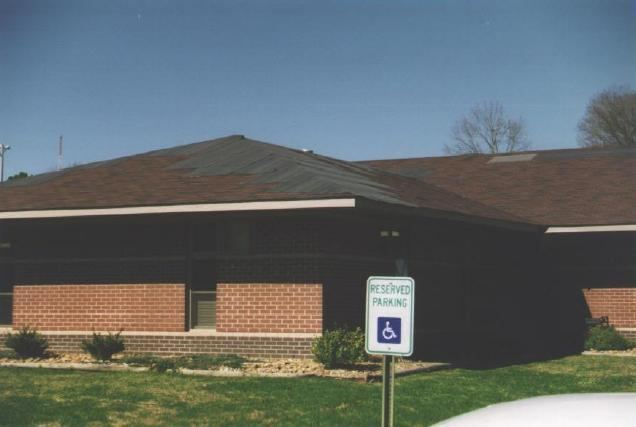 | ||
The Enhanced Fujita scale (EF-Scale) rates the intensity of tornadoes in the United States and Canada based on the damage they cause.
Contents
- Parameters
- Damage indicators and degrees of damage
- Differences from the Fujita scale
- Rating classifications
- References
Implemented in place of the Fujita scale introduced in 1971 by Tetsuya Theodore Fujita, it began operational use in the United States on February 1, 2007, followed by Canada on April 1, 2013. The scale has the same basic design as the original Fujita scale—six categories from zero to five, representing increasing degrees of damage. It was revised to reflect better examinations of tornado damage surveys, so as to align wind speeds more closely with associated storm damage. Better standardizing and elucidating what was previously subjective and ambiguous, it also adds more types of structures and vegetation, expands degrees of damage, and better accounts for variables such as differences in construction quality.
The new scale was publicly unveiled by the National Weather Service at a conference of the American Meteorological Society in Atlanta on February 2, 2006. It was developed from 2000 to 2004 by the Fujita Scale Enhancement Project of the Wind Science and Engineering Research Center at Texas Tech University, which brought together dozens of expert meteorologists and civil engineers in addition to its own resources.
As with the Fujita scale, the Enhanced Fujita scale remains a damage scale and only a proxy for actual wind speeds. While the wind speeds associated with the damage listed have not undergone empirical analysis (such as detailed physical or any numerical modelling) owing to excessive cost, the wind speeds were obtained through a process of expert elicitation based on various engineering studies since the 1970s as well as from field experience of meteorologists and engineers. In addition to damage to structures and vegetation, radar data, photogrammetry, and cycloidal marks (ground swirl patterns) may be utilized when available.
The scale was used for the first time in the United States a year after its public announcement when parts of central Florida were struck by multiple tornadoes, the strongest of which were rated at EF3 on the new scale. It was used for the first time in Canada shortly after its implementation there when a tornado developed near the town on Shelburne, Ontario on April 18, 2013, causing up to EF1 damage.
Parameters
The six categories for the EF scale are listed below, in order of increasing intensity. Although the wind speeds and photographic damage examples are updated, the damage descriptions given are those from the Fujita scale, which are more or less still accurate. However, for the actual EF scale in practice, damage indicators (the type of structure which has been damaged) are predominantly used in determining the tornado intensity.
Damage indicators and degrees of damage
The EF scale currently has 28 damage indicators (DI), or types of structures and vegetation, each with a varying number of degrees of damage (DoD). Larger degrees of damage done to the damage indicators correspond to higher wind speeds. The links in the right column of the following table describe the degrees of damage for the damage indicators listed in each row.
Differences from the Fujita scale
The new scale takes into account quality of construction and standardizes different kinds of structures. The wind speeds on the original scale were deemed by meteorologists and engineers as being too high, and engineering studies indicated that slower winds than initially estimated cause the respective degrees of damage. The old scale lists an F5 tornado as wind speeds of 261–318 mph (420–512 km/h), while the new scale lists an EF5 as a tornado with winds above 200 mph (322 km/h), found to be sufficient to cause the damage previously ascribed to the F5 range of wind speeds. None of the tornadoes recorded on or before January 31, 2007, will be re-categorized.
Essentially, there is no functional difference in how tornadoes are rated. The old ratings and new ratings are smoothly connected with a linear formula. The only differences are adjusted wind speeds, measurements of which were not used in previous ratings, and refined damage descriptions; this is to standardize ratings and to make it easier to rate tornadoes which strike few structures. Twenty-eight Damage Indicators (DI), with descriptions such as "double-wide mobile home" or "strip mall", are used along with Degrees of Damage (DOD) to determine wind estimates. Different structures, depending on their building materials and ability to survive high winds, have their own DIs and DODs. Damage descriptors and wind speeds will also be readily updated as new information is learned.
Since the new system still uses actual tornado damage and similar degrees of damage for each category to estimate the storm's wind speed, the National Weather Service states that the new scale will likely not lead to an increase in a number of tornadoes classified as EF5. Additionally, the upper bound of the wind speed range for EF5 is open—in other words, there is no maximum wind speed designated.
Rating classifications
For purposes such as tornado climatology studies, Enhanced Fujita scale ratings may be grouped into classes.
Usually, the classic version always suggests EF4 and EF5 are the most violent tornadoes.
The table shown to the right shows other variations of the tornado rating classifications based on certain areas.
